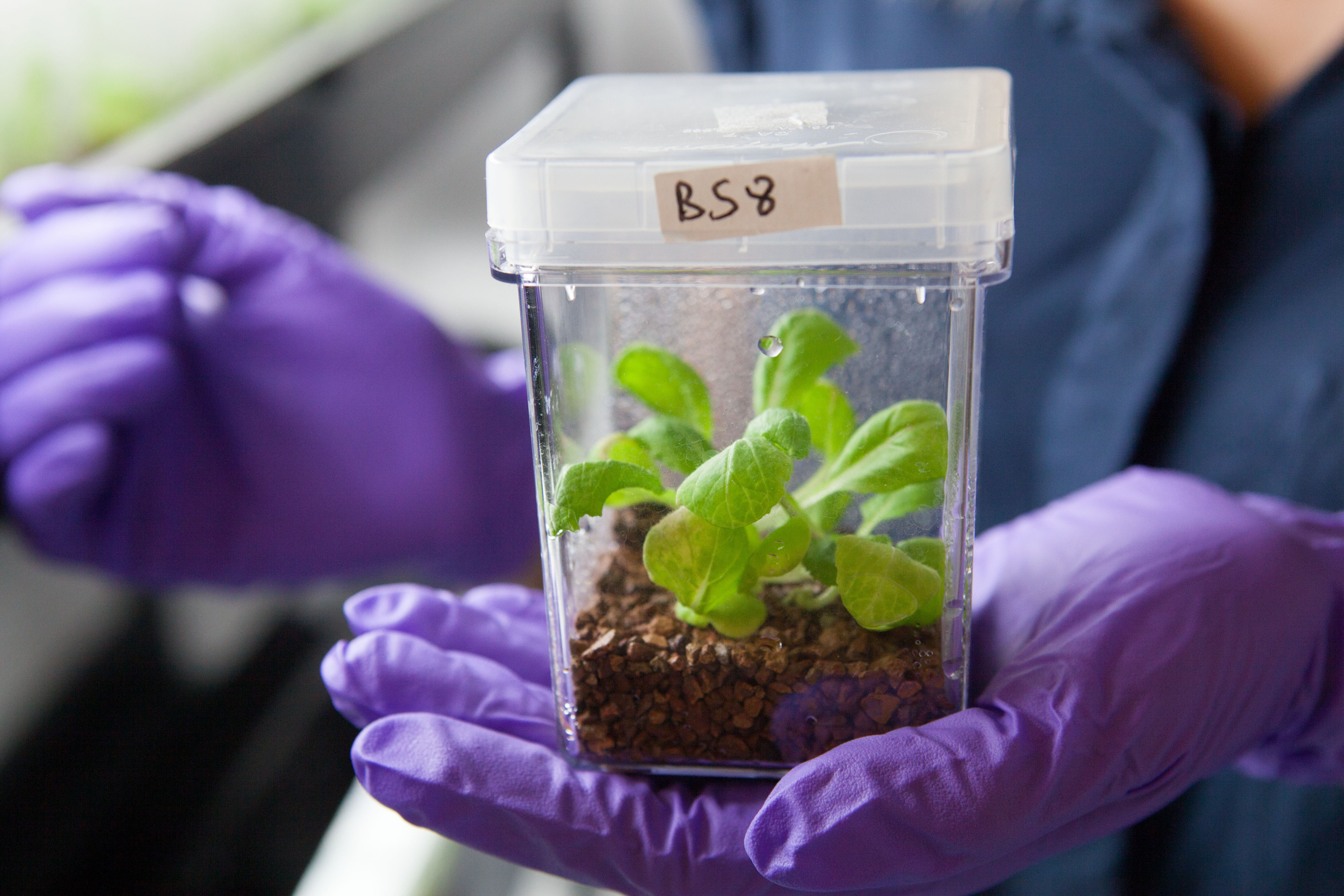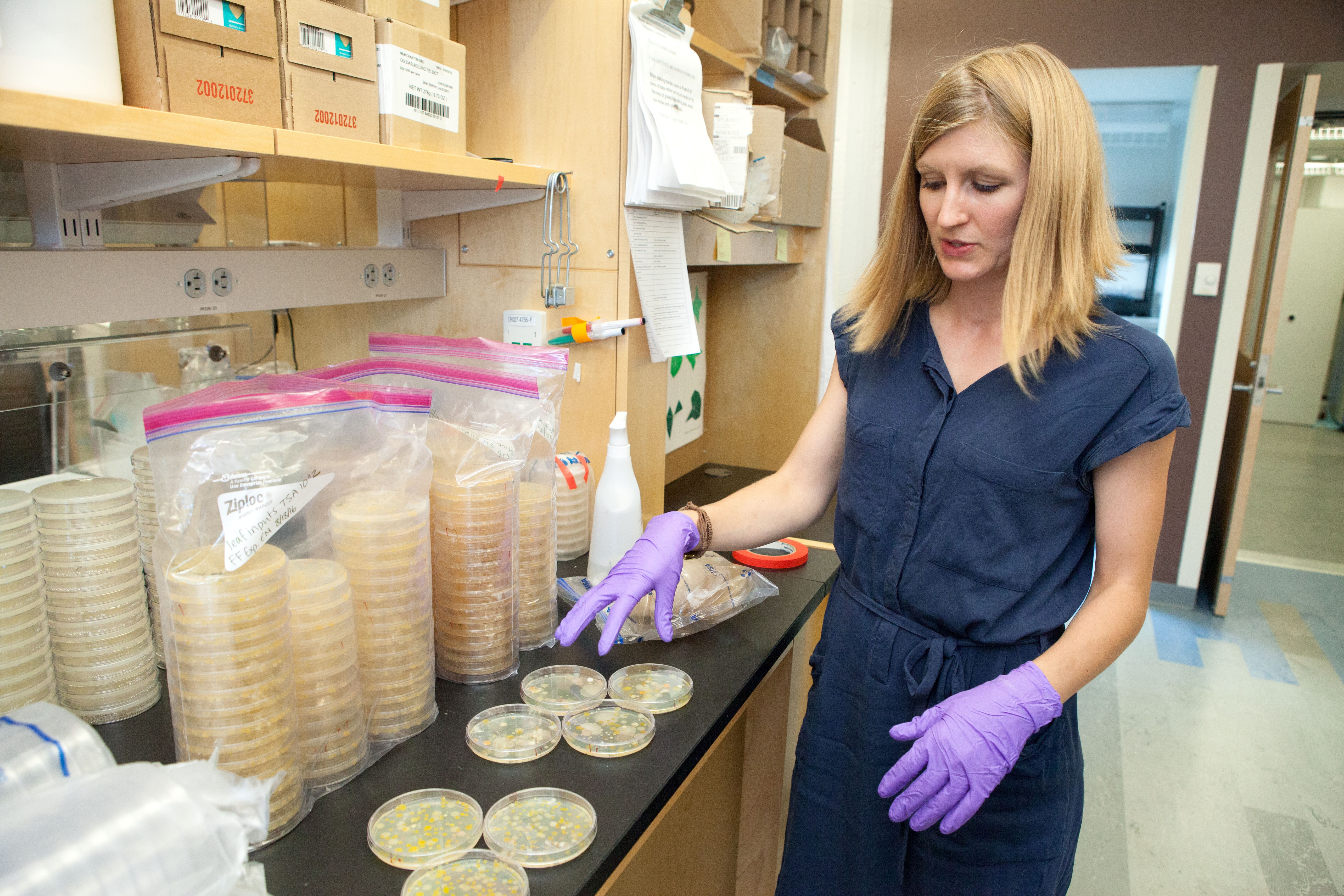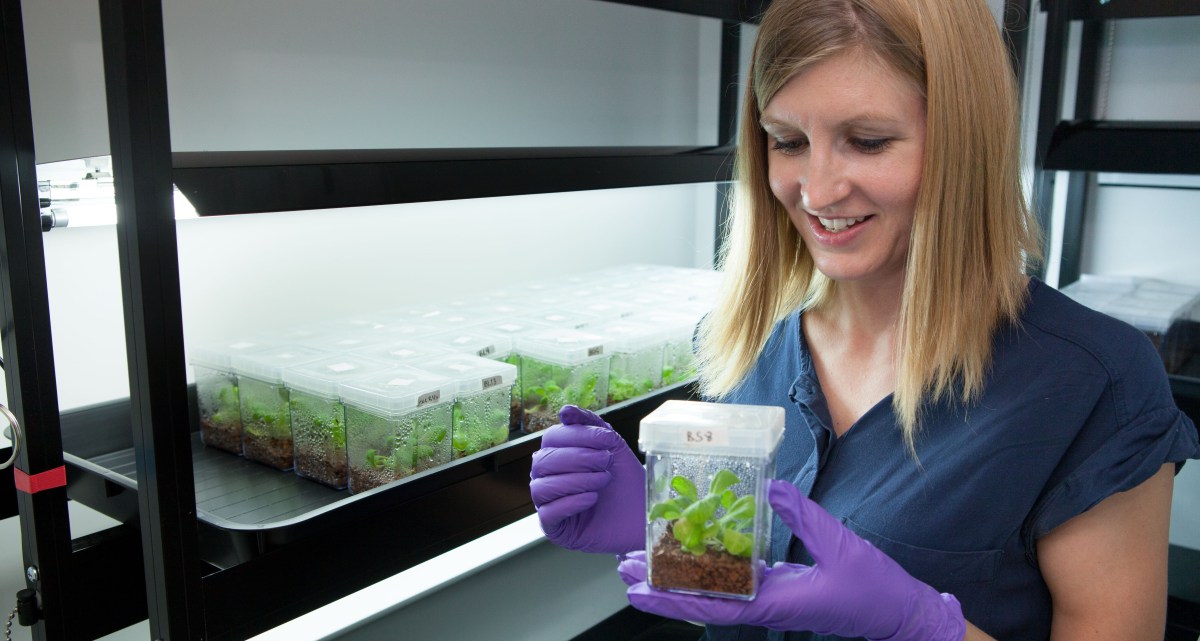I sat down with Esther Miller, third year Ph.D. candidate at Tufts University, at her lab in Medford, Massachusetts. Amongst beakers of kombucha, Petri dishes of microbes from cheese rinds, and the scent of sauerkraut, she spoke about her current work with cabbages and a very unusual past research project.
Cook’s Science: Tell me a little about yourself. What made you decide to get your Ph.D.?
Esther Miller: I took a little more of a circuitous route than most graduate students—I was a high school teacher for a few years. And then I worked in a really cool biotech company, which was making genetically modified mosquitoes, but I wanted to be more of a scientist than a regulator so I went back to university and found this lab. My first impression was, wow, “this is food AND science.”
CS: Why microbial ecology?
EM: I think microbial ecology is a cool topic because microbes are everywhere and how they interact can be used as a model for how animals interact and how ecosystems interact—but you can study it in the lab [as opposed to out in the field] and it’s a lot quicker and easier. I think the work we do in this lab is also relevant to the public; it’s relevant for consumers and for people who are doing fermentation, rather then just doing microbial ecology on a Petri dish with two species that you’re not likely to encounter [in the real world]—that seems too abstract.
CS: Tell us about your current research.
EM: I’m looking at how microbes come together in communities on the leaves of cabbages and then studying the function of those communities—how communities [of microbes] can produce a ferment. For example, it’s the bacteria on the leaf of a cabbage that create sauerkraut—they’re an important component, they have to be there.
CS: What are some experiments that you’re doing to understand these microbe communities?
EM: I grew cabbages at three different sites, brought them back to the lab, and then I fermented them and looked at how the pH changed during fermentation. As a ferment progresses, it gets more and more acidic, and that’s a function of the lactic acid bacteria that cause the ferment. So, the faster it ferments, or the lower the pH it reaches—it’s showing that the function of that microbe community is better.

CS: What’s with the (adorable) cabbages in the little boxes?
EM: Normally, microbial ecologists work on Petri dishes with agar plates, but that wouldn’t work with my system. It wouldn’t represent how the plant is interacting with the microbes as well. By sterilizing the seeds of the cabbage plant and putting them in the tiny boxes, I can create a totally sterile cabbage with no microbes on it. Then I can add microbes to the plant and see how they interact with one another.
CS: If I were to examine one of your cabbage leaves under a microscope, what would I see?
EM: So, anything above the ground on the plant, which is covered in microbes, is called the phyllosphere—the biosphere is all living things on the earth, the phyllosphere includes all living things on the surface of the plant. That could include yeast, it could be plant pathogens that can cause the leaf to break down or rot, it could be bacteria that improve the health of the plant by competing with pathogens, it could be tiny single-cell organisms living and interacting with the plant—there’s a whole tiny microscopic world.
CS: What do you hope to learn from this research? How do you hope your findings will be applied to food systems or even food consumers like us?
EM: In some of my pilot studies, I learned that if you plant cabbages at different sites, you end of up with different lactic acid bacteria. So if you’re a sauerkraut producer and you use cabbages from one farm and then compared your sauerkraut to cabbages from a second farm, you might have a different end product. Really understanding what bacteria are present and how they’re getting onto the cabbage could help provide consistency in end products or help growers or sauerkraut producers understand the bacteria and can ensure that there are sufficient lactic acid bacteria to ferment the cabbage.
CS: What tips would you give our readers who are interested in making their own sauerkraut, kimchi, or other fermented goodies at home?
EM: I think the best thing is to just go and do it. I think a lot of people spend time reading about it or worrying about it, but I think you should just go buy a cabbage and do it. If you make sure that your ferment is anaerobic, or completely submerged [in the brine], it shouldn’t have pathogens growing in it at all. If it’s not completely submerged just top it off with a bit of water, or preferably brine, but just make sure that it’s underwater. Just do it is the best tip.

CS: What’s the craziest thing you’ve ever done in the name of science?
EM: When I was an undergrad, I tickled the legs of locusts for five seconds every minute for eight hours.
CS: What!? Why?
EM: If you agitate their legs, they start swarming. Locusts are normally solitary but if they’re agitated they start to swarm.
CS: What does one use to tickle the legs of a locust?
EM: A little paintbrush, like one you would paint a model plane with.
CS: Wow. That’s a great answer to that question. What’s next for you?
EM: I want to plant the cabbages out in the field and work with farmers and producers. I want to think about ways that you could support plants by adding microbes; how microbes can improve the growth of plants.
CS: I heard that you’re also starting to explore how herbivores, like caterpillars, affect the microbiomes of plant leaves. Tell us about that.
EM: When an herbivore, such as a caterpillar, bites the leaf, the plant responds to that herbivore by producing a chemical defense. These chemicals that the herbivore induces in the plant will possibly alter the microbes that live on the surface of the plant. Herbivory and microbes on the plant can have antagonistic effects—if there are microbes living on the surface of the leaf, they can influence how the plant responds to herbivores and vice versa. I want to try adding herbivores to the cabbages and then add microbes and see how the population of microbes changes on the leaf with the addition of the herbivore. This is true ecology though and it’s going to be seasonal, so I have to wait for more caterpillars to come round.
CS: We’ll have to check back next spring and see what you find. Until then, we need to find a reason to crash your lab meeting with the cheese.
This interview has been condensed and edited for clarity.
Photography by Kevin White


